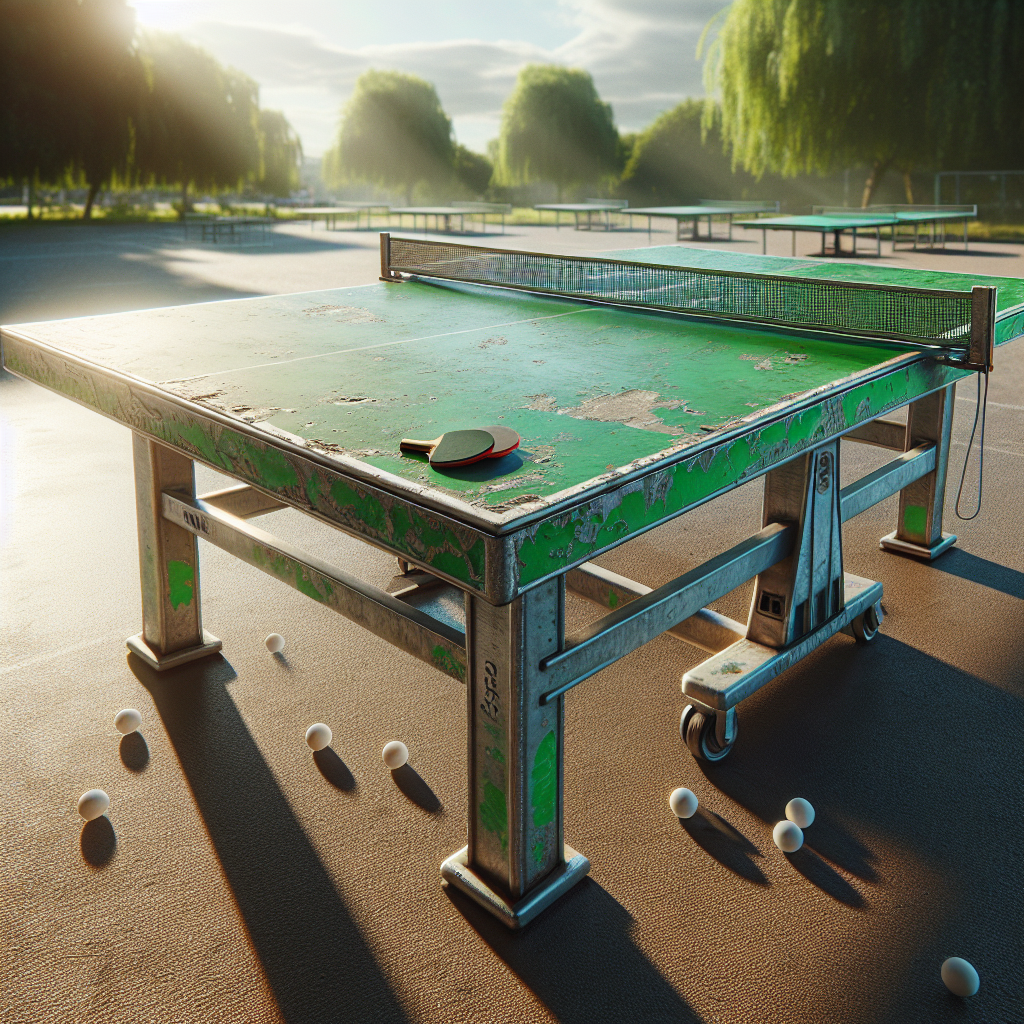Getting the Hang of Ping Pong Rules
Want to crush it at ping pong? Knowing the rules is your first step. Let’s break down the basics of serving and scoring so you can play like a pro.
Serving Rules
Serving in ping pong isn’t just about whacking the ball. You gotta start with the ball in an open palm, toss it at least six inches up, and then hit it with your racket. The ball needs to bounce on your side first, then cross the net and land on your opponent’s side.
If the ball clips the net but still lands on the other side, it’s called a “let,” and you replay the serve. But if it hits the net and doesn’t make it over, your opponent gets the point.
Each player serves twice before switching. This continues until someone hits 11 points. If you both get to 10 points (deuce), you alternate serves every point until one of you wins by two points. For more tips, check out our guide on how to play ping pong.
Scoring and Game Format
A game of ping pong goes up to 11 points, but you need to win by at least two points. This rule came in 2001, replacing the old 21-point format.
Points are scored when your opponent messes up a shot. You switch serves every two points. If you hit 10-10, you keep alternating serves until someone wins by two points.
Knowing these rules helps you play smarter and make better decisions during the game. For the full rundown, see our articles on official ping pong rules and official table tennis rules.
So, grab your paddle, and let’s get playing!
Common Mistakes to Avoid
Want to up your ping pong game? Knowing the ping pong rules for serving is a must. Avoiding common mistakes during service keeps things fair and gives you an edge. Let’s break down two big areas where folks often slip up: service violations and point scenarios.
Service Violations
Messing up your serve can cost you the game. Here are some common mistakes to dodge:
-
Touching the table: If your free hand (the one not holding the paddle) touches the table during a rally, your opponent gets a point. Same goes if you accidentally move the table with anything you’re wearing or carrying (Killerspin).
-
Bad toss: When serving, you gotta toss the ball straight up at least six inches without spinning it. It needs to bounce once on your side and then on your opponent’s side. Mess this up, and your opponent gets the point.
Stick to these rules to avoid losing points over silly mistakes and keep the game fun and fair.
Point Scenarios
Scoring in ping pong can be tricky. Here are some scenarios where points are awarded:
-
Ball not bouncing on opponent’s side: If your serve doesn’t make it to the opponent’s side, they get the point (Table Tennis Fandom).
-
Double bounce: If the ball bounces twice on your side before you return it, your opponent scores.
-
Bad return: If your return doesn’t land on the opponent’s side or doesn’t follow the official table tennis rules, your opponent gets the point.
Knowing these scenarios helps keep the score accurate and the game fair. Brush up on the official ping pong rules to get a full grasp of the game.
Avoiding service violations and understanding point scenarios can seriously boost your gameplay. Ping pong is all about skill and strategy, and knowing the rules is key to becoming a top player.
Doubles vs. Singles Play
Playing ping pong can be a blast, but doubles and singles matches have their own quirks. Knowing these differences can make your game smoother and more fun.
Serving Rules
In singles, you can serve the ball anywhere on the opponent’s side of the table. No restrictions, just aim and hit (Olympics). But doubles? That’s a different story. You have to serve diagonally. The server stands on the right and sends the ball to the opponent’s right side. The ball must bounce in the right-hand box on both sides of the table.
Rule Differences
Besides serving, doubles has a few more twists. Players must take turns hitting the ball. No hogging the spotlight—everyone gets a turn. This keeps the game fair and lively.
There’s also a line down the middle of the table in doubles. This line splits the table into two halves, helping players know where to serve and play.
Why It Matters
Knowing these rules helps keep the game fair and fun. Stick to the guidelines, and you’ll have a great time playing doubles. For a full rundown of all the official table tennis rules, check out the latest from the governing bodies.
Ready to up your ping pong game? Dive into the official ping pong rules and learn some killer strategies. With the right knowledge, you’ll be serving like a pro and dominating the table in no time.
Pro Tips for Ping Pong
Want to ace your serve in ping pong? Let’s break it down with some tips from the pros. These insights can seriously up your game and make you a force to be reckoned with.
Smart Moves
If you’re just starting out, you might think aiming for the table’s edge is the way to go. But guess what? The pros steer clear of this. Why? Because hitting the edge is like threading a needle while riding a roller coaster—super tough and risky. You need pinpoint accuracy, and the chances of messing up are high (Quora).
Instead, the experts aim for the larger areas of the table. This strategy is all about consistency and control. By targeting these broader spots, you keep the ball in play more often and can better handle your opponent’s spins. It’s like playing chess on a ping pong table—every move is calculated (Quora).
So, take a page from the pros’ playbook. Aim for the bigger areas to boost your consistency and control. This approach will make your serve more reliable and your overall game stronger.
Olympic Ping Pong: The Big Leagues
Ping pong isn’t just a basement game; it’s an Olympic sport with serious street cred. Since 1988, table tennis has been a crowd favorite at the Olympics.
In the Olympics, players follow official table tennis rules and compete in singles and doubles. Singles matches are best-of-seven, while doubles are best-of-five. Each game goes to 11 points, and you’ve got to win by two points to claim victory.
Watching Olympic ping pong is like getting a masterclass in the sport. The athletes are top-notch, and their skills and strategies are on full display. It’s a great way to pick up advanced techniques and see how the best in the world play.
By studying Olympic players, you can learn a ton about high-level ping pong. Their performances can inspire you to push your own limits and keep improving.
Always check the official ping pong rules and practice regularly to sharpen your serve and overall game. Learning from the best and practicing smart strategies will help you take your ping pong skills to the next level.








